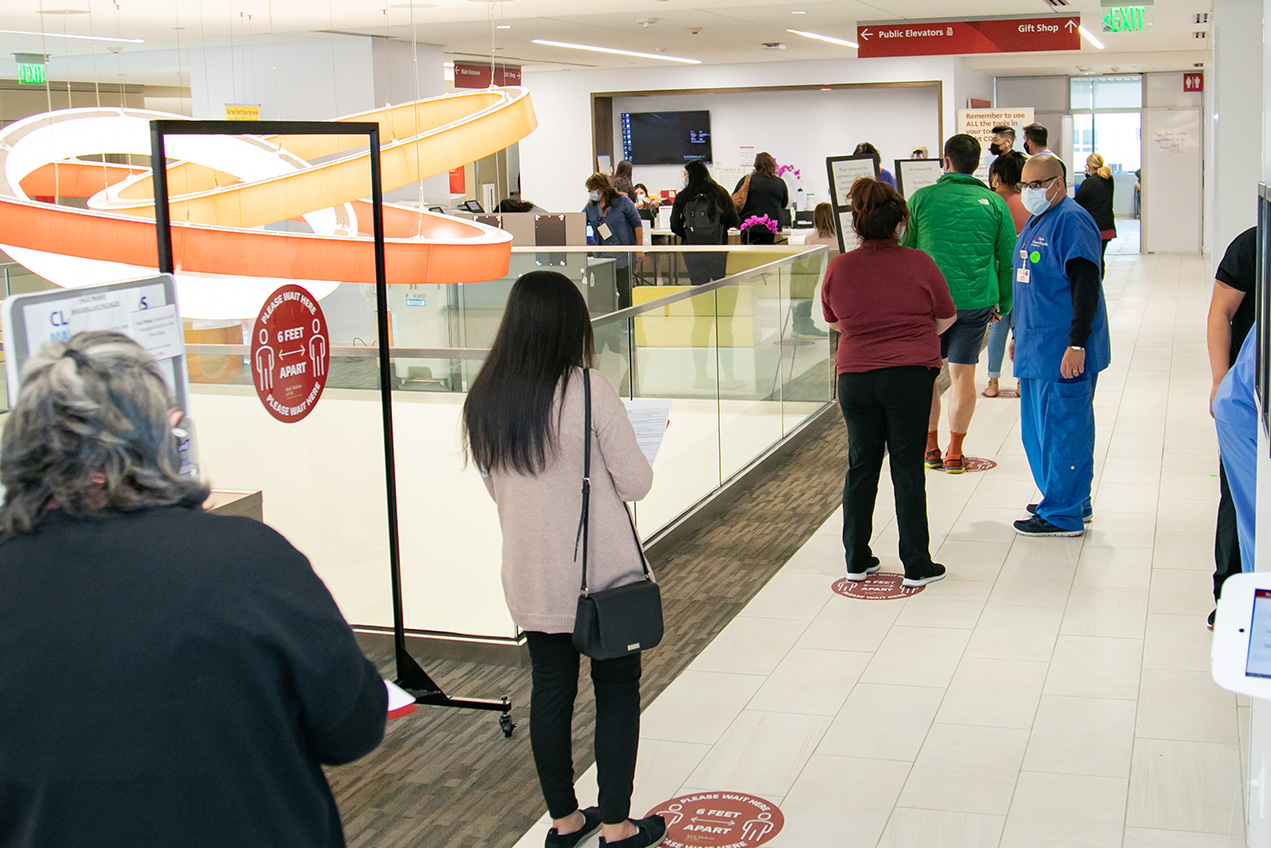Geoffrey Joyce is chair of the Department of Pharmaceutical and Health Economics at the USC School of Pharmacy. He recently shared his perspective on the end of the pandemic that was published on MarketWatch and here on HSC News.
The news cycle on COVID-19 can get stuck on negatives. Variant strains! Distribution snafus! Not enough vaccines!
But barring unforeseen developments, we can expect to have the pandemic under control by Memorial Day. That doesn’t mean the virus will be out of our lives. But rising immunity from vaccines and prior exposure should have it cornered, with its impact reduced to something approaching a normal flu season in terms of deaths and hospitalizations.
We already have the virus on the run. We are vaccinating over 15 times more people each day than report having a new infection. Some 40 million or more will have received at least one vaccine shot by the end of February, providing more protection each day. Meanwhile, about 110 million Americans have likely had the virus, which gives most of them immunity that studies show can last 6 months or longer.
Together, that means that four out of 10 Americans have immune systems armored up against the coronavirus, which is likely contributing to a slowing in infections and hospitalizations. If we can fully vaccinate another 130 million people by Memorial Day, we may be approaching herd protection.
This likely scenario involves 80 million vaccinations using 160 million doses from Pfizer and Moderna, and 50 million vaccinations from the single shot vaccine made by Johnson and Johnson, assuming the FDA grants emergency use to J&J by the end of the month. The current pace of 1.7 million doses a day would need to ramp up steadily through April, probably reaching 3 million doses a day.
That is a doable number now that pharmacies have joined the distribution channels. To put this into context, about 4 million flu vaccines are administered each day during peak winter months, although it’s not quite an apples-to-apples comparison. Almost any medical provider can store and administer a flu vaccine, whereas both the Pfizer and Moderna vaccines require specific cold storage.
Dr. Anthony S. Fauci, the government’s top infectious disease expert, now says that any American could begin seeking a vaccine in an “open season” in early April, and not have to wait to qualify under various priority categories.
Both Fauci and President Biden are warning that many Americans may not be vaccinated even by the end of summer. But there is a difference between vaccinating the vast majority of Americans and reaching a point where the pandemic is clearly headed toward defeat, with each day building confidence that fewer infections, hospitalizations and deaths are not a just a breather between peaks. Those days are coming fast.
Manufacturing issues are real, but looking much better. Pfizer and Moderna have promised to deliver at least 3 million shots daily over the next month and a half and to accelerate the pace to about 3.3 million per day starting in April. The Biden administration has invoked the Defense Production Act to focus industry on generating the necessary components.
The idea that variant strains of the virus will elude the vaccines and refuel the pandemic remain a possibility, but largely speculative. For example, vaccines that have shown reduced effectiveness against a variant in South Africa still prevent severe illness, hospitalization and death. The overwhelming number of antibodies generated by current vaccines or a previous infection are disarming the virus, literally.
Distribution problems that seemed so critical a month ago are fading, although improvements can still be made. The three vaccines can be seen as a form of triage: Pfizer’s vaccine should be distributed at hospitals and large venues where super deep freezers can operate. Moderna requires less elaborate equipment and can supply pharmacies and smaller centers. (A small park where I volunteer inoculated 2,100 people with the Moderna vaccine in one day recently). The easily stored, one-dose J&J vaccine can travel to places where public health departments need to hunt down arms.
It may be that the Biden administration doesn’t want to paint too rosy a picture for fear that people will stop heeding the public health admonitions to wear masks and social distance. Those practices are necessary to keep the virus in check while the vaccines do their work. Damping down expectations may also have a political payoff. It is better to be surprised on the upside than the other way around.
But the numbers are working for us. The risks that immobilized us for more than a year are becoming manageable. After millions of infections and nearly 500,000 deaths, it is time to start planning for better days.


